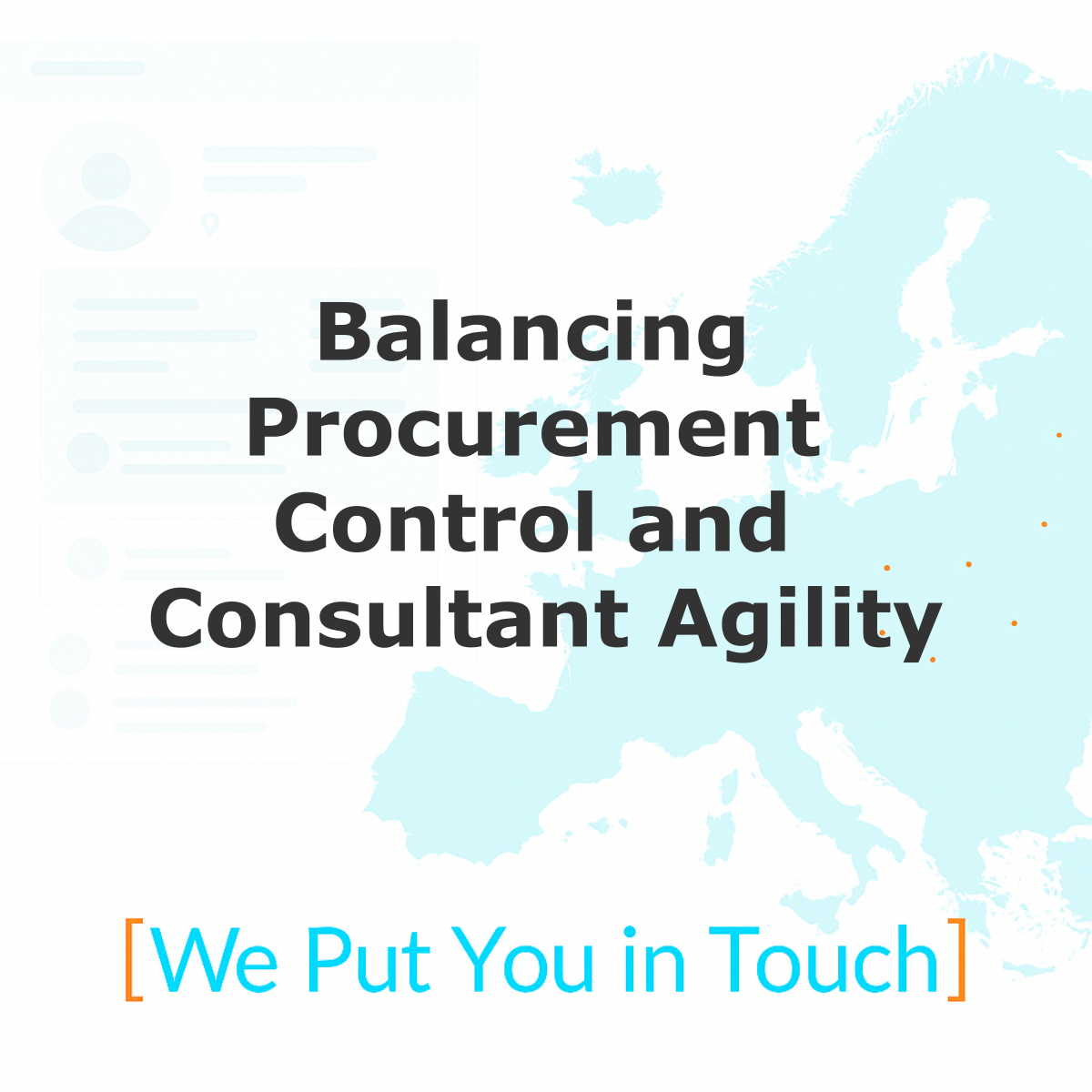
When Fewer Vendors Means Greater Risk
In recent years, many large financial institutions in Luxembourg have streamlined their procurement processes under the banner of “vendor rationalization.” The strategy is meant to reduce administrative burden, enhance oversight, and limit legal risk by concentrating external engagements with a select number of pre-approved providers. But in practice, this consolidation is showing cracks—particularly when it comes to sourcing independent consultants with niche expertise.
Instead of increasing efficiency, some institutions have inadvertently reduced their agility. Procurement frameworks that favor scale over specialization often exclude highly skilled professionals—especially those operating as independent consultants or micro-firms—despite their deep sector knowledge and strategic value. The result: a growing disconnect between the talent institutions need and the suppliers they are allowed to use.
Independent Consultants: Caught in the Middle
The professionals most impacted by this model are not large vendors or IT contractors, but rather independent consultants operating in areas like regulatory strategy, treasury management, cross-border structuring, ESG compliance, or fund operations. These profiles are highly specialized, usually senior, and often already vetted through past assignments or peer recommendations. Yet many of them face a de facto exclusion from institutional tenders due to procurement restrictions.
In theory, intermediaries—such as umbrella firms or pre-approved resellers—can act as conduits. But in practice, they add cost without necessarily improving quality or risk control. Their presence dilutes the direct relationship between client and consultant and often leaves the hiring manager with less flexibility and slower onboarding. For institutions, this translates into higher daily rates and longer time-to-engagement without a corresponding increase in value or assurance.
A Changing Talent Landscape
These procurement constraints collide with a deeper structural shift in the labour market. Across Europe, the number of freelance professionals continues to grow—driven both by lifestyle choices and economic realities. According to recent projections, nearly 43 million Europeans will be freelancers by the end of 2025, making up roughly 13% of the total workforce.
This evolution is particularly visible in two segments:
- Young professionals, especially among Millennials and Gen Z, increasingly reject the traditional career path. They are less attracted by long-term corporate contracts and more motivated by meaningful, mission-driven work. Freelance consulting allows them to curate their career path project by project, building diverse experiences rather than climbing hierarchical ladders. In this generation, flexibility, autonomy, and value alignment often outweigh job security.
- At the other end of the spectrum, senior professionals aged 45+—particularly those transitioning from executive roles or facing career breaks—are turning to consultancy as a viable second act. While many companies hesitate to rehire senior profiles full-time due to internal salary bands or generational strategies, freelance contracts offer a more acceptable framework. These arrangements allow companies to access critical know-how without disrupting internal headcounts.
This dual trend—driven by both aspiration and adaptation—is reshaping the market for high-skill labour. Institutions with rigid procurement filters may be systematically excluding the very profiles they most need: agile juniors with new ideas and experienced leaders with decades of domain knowledge.
The Invisible Costs of Intermediated Procurement
While procurement rationalization aims at risk mitigation and compliance, it introduces indirect costs that often go unmeasured. These include:
- Delayed delivery: Re-routing through intermediaries slows down onboarding and often increases administrative friction.
- Higher costs: Layers of commission raise daily rates for the same talent.
- Reduced transparency: Clients may not know who is actually performing the work.
- Limited responsiveness: Larger vendors may prioritize volume contracts over individual mandates, reducing client leverage.
These inefficiencies are compounded by the opacity of intermediary operations. Some do little more than act as contractual wrappers, offering no meaningful vetting, training, or oversight—yet still claiming a margin that can exceed 20% of the consultant’s day rate.
Building a Smarter Model
To adapt to this shifting environment, some platforms and initiatives are offering hybrid solutions: centralized procurement frameworks that combine the efficiency of approved panels with the flexibility of open talent marketplaces. These models offer several advantages:
- Mutualized due diligence: Shared vetting mechanisms reduce duplication while maintaining compliance.
- Contract modularity: Framework agreements that allow onboarding of vetted consultants on-demand.
- Traceable performance: Transparent scoring and reviews provide ongoing quality control.
- Cost efficiency: Reduced intermediation leads to better rates for clients and fairer compensation for consultants.
These models also allow procurement teams to retain control—without becoming a barrier. They are particularly relevant in sectors like finance, where access to domain-specific expertise is critical and timelines are often compressed.
An example of this approach can be seen in We Put You in Touch’s Welcome page, which outlines the platform’s commitment to transparency, security, and smart intermediation in finance-focused consulting.
Conclusion
Procurement models are evolving—but not fast enough. In a context where talent preferences are shifting, regulatory complexity is rising, and transformation timelines are accelerating, financial institutions cannot afford to exclude the best consultants on technical grounds.
The challenge for procurement teams is to maintain control without becoming an obstacle to agility and expertise. Smarter frameworks, better intermediation, and the strategic use of specialized platforms may offer a path forward. Because in a market where talent is more mobile than ever, access—not approval—is the real competitive advantage.
References
- European Freelance Workforce Projection Report – 2024–2025 Outlook
- Malt Survey: Freelance Satisfaction and Career Choices in Europe
- Wired: High-Value Freelancers Reshaping Tech & Finance
- Frontiers in Education: Senior Freelancers and Lifelong Employability
- RGP Global Talent Study: Disruptive Employment Trends
